INSIDE
RACING
T E C H N O L O G Y
IRT Home
IRT Home
News Page
Contents Page
Newsletter &
Books
email Paul
Tires and Aero
Link back to the Brickyard Test page
A tire guy for one of the teams organizes the team's Goodyear tires for the test.
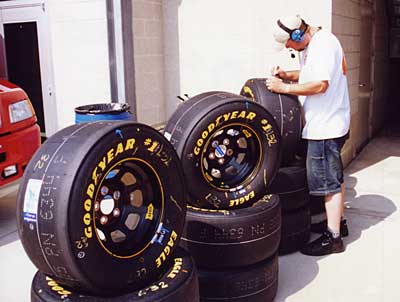
He measured the depth of the wear holes in the tread. The numbers marked on the tread are the depth in thousands of an inch, a little more than a sixteenth.
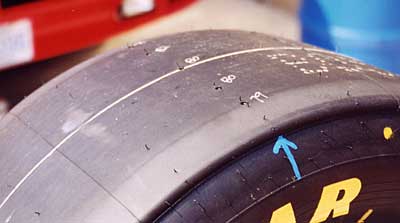
Tire labels allow traceability to specific batches of materials and processing. The vertical number on the left edge of the label is the spring rate of the tire (1419 in this photo) at some inflation pressure, 23 psi I was told.
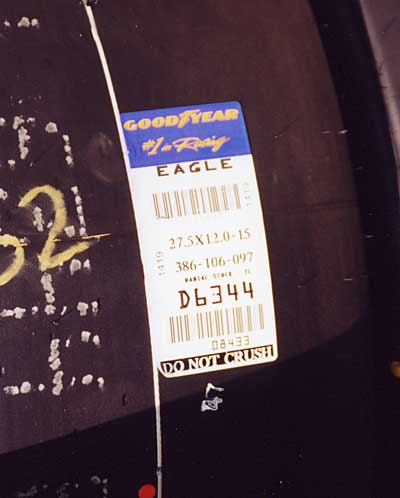
I hadn't seen these cars in about four years and was surprised how the shapes have changed. This is Dave Blaney's Ford Taurus.

The shape of the front fenders around the wheel opening is what caught my attention. The front fenders have a crease at the top just above the wheel well. And the fender flares out in front of the tire and then in at back of the wheel well.
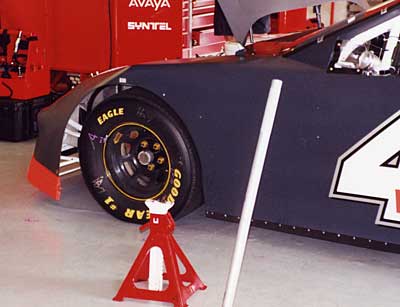
This view shows the flare out at the front and the flare in at the back of the wheel opening.
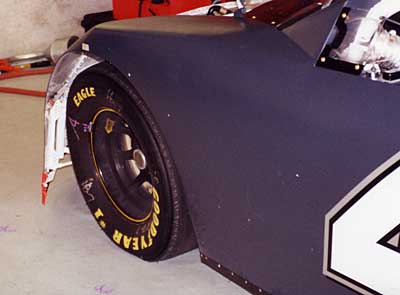
This view of the right side of Tony Raines' car shows less aggressive flares.
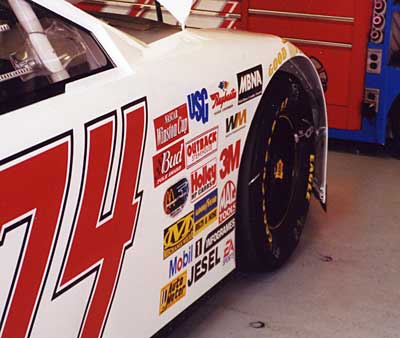
But a look down the left side of that same car gives us a good look at the flare out in front of the wheel opening and the flare in at the back. And the same configuration for the wheel opening at the rear tire.

Here's what's going on. The front air dam rides close to the track surface in the corners causing a pressure drop under the front of the car creating downforce. These flares at the wheel wells enhance downforce by pumping air from the back of the air dam out to the side of the car. The air near the surface of the tire tends to move with the tire and wants to exit at the rear of the fender cutout. The flare in front of the wheelwell causes air flowing around the car to create a lower pressure under the car.
It looks to me like the left-side shapes are more aggressive than on the right. You'd want more downforce on the left-front corner to offset the right-to-left weight transfer in a corner. Getting the inside tires to work on an oval is a challenge.
A few years ago, when NASCAR rules mandated a big rear deck-lid spoiler, that device generated a lot of drag and downforce at the rear of the car. The teams complained of push, understeer, because there was no downforce at the front of the car to balance that from the spoiler. Over a period of several years NASCAR allowed the teams to develop body shapes at the front of the car that generate more downforce.
Before these changes NASCAR Winston Cup cars generated about 500 lbs of downforce total. Due to the big deck-lid spoiler and the changes at the front a good body now puts out 1,500 lbs of downforce.